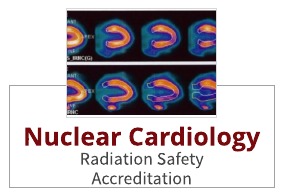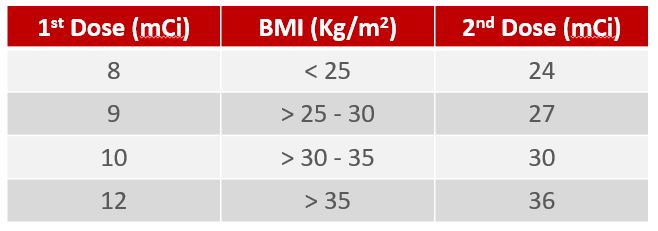Over the next few weeks, we will focus on Nuclear Cardiology. Effective 2017, the Intersocietal Accreditation Commission implemented updated Nuclear Accreditation Guidelines. Also, the American Society of Nuclear Cardiology released updated guidelines (2016) for SPECT nuclear cardiology procedures. These standards focused on patient-centered stress protocols and radiation safety.
So how are we doing 3 years after the implementation of these updates?
Let’s review some of these changes to ensure your lab is compliant with both nuclear accreditation guidelines and ALARA radiation safety guidelines.

NUCLEAR ACCREDITATION GUIDELINES
Are you currently performing the required quality improvement measures to meet the IAC (ICANL) Nuclear Accreditation Guidelines? In a previous blog, we provided details regarding each of the mandated QI measures:
- Test appropriateness
- Are the indications for nuclear stress tests warranted?
- Technical quality and safety of the imaging
- Dose verification, artifacts, attenuation, patient motion, etc.
- Interpretive quality review
- Physician peer review and/or
- Clinical correlation
- Report completeness and timeliness
- Reports contain all mandated components
- Reports read within 24 hours
- Final report sent to referring physician within 2 working days
- Meetings
- Minimum of 2 meetings per year
WHO HAS TIME FOR THIS?!
Knowing what is required is one thing…finding the time is another! What’s the easiest way to complete these measures while ensuring quality? In the upcoming weeks, we will spend some time breaking down each component of the QI program. We will provide you with tips and answer these questions:
- What are the minimum requirements?
- How can I save time?
- What if I want to expand my QI program?
RADIATION SAFETY TIPS
A large part of accreditation is about ensuring patient safety. We recommend you review our previous blogs. These blogs provided detailed information regarding the updated ALARA and radiation safety guidelines:
- 5 Ways to Reduce Radiation Safety
- Essential Steps to Creating MPI Patient-Centered Imaging Protocols
THE 5 MAIN RADIATION SAFETY TAKEAWAYS ARE:
- Use radionuclides with shorter half-life such as Tc-99m.
- When possible, perform the stress portion of the test first, review the images and determine whether the rest portion is necessary.
- Use weight-based dosing
- Use software and hardware that can optimize images while lowering radiation dose.
WEIGHT BASED DOSING
When calculating weight-based dosing, ASNC recommends the following:

Note: The 2nd dose is three times the amount of the 1st dose.
SUMMARY
This week’s blog was a review of previous information on nuclear accreditation guidelines and radiation safety. The intention was to lay the foundation for a deep dive into how to streamline the accreditation process. In future blogs, we will provide tips on completing your QI measures in a streamlined efficient manner.
 Judith Buckland, MBA, RDCS, FASE
Judith Buckland, MBA, RDCS, FASE
REFERENCES:
- IAC Nuclear/PET Standards
- ASNC Imaging Guidelines for SPECT nuclear cardiology procedures: Stress, protocols, and tracers
- ASNC Preferred Practice Statement: Patient-centered Imaging
- ASNC Information Statement: Recommendations for reducing radiation exposure in myocardial perfusion imaging
- AHA Scientific Statement: Approaches to Enhancing Radiation Safety in Cardiovascular Imaging

 Learn more:
Learn more: